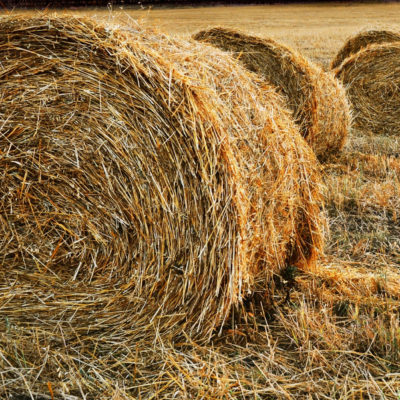Aflatoxins are part of a large group of fungal or mold produced toxins called mycotoxins. This sub-group of mycotoxins are considered to be ‘the big ones’ of the mycotoxin world. Aflatoxins have the biggest impact on animal and human health. 25% of the world’s food crop contamination can be attributed to aflatoxins. These toxins are colorless, odorless, and tasteless. These characteristics make them difficult to identify and remove. Furthermore, aflatoxins are not degraded under regular cooking temperatures. Thereby increasing the difficulty to remove them. Additionally, they are also only slightly soluble in water.
Aflatoxin Production
Fungal species known as Aspergillus are responsible for aflatoxin production. Common aflatoxin producing Aspergillus examples include A.flavus and A.parasiticus. Aspergillus can typically be found growing in soil, decaying vegetation, hay, grains, and improperly stored foods. Processing contaminated feed and foods can lead to aflatoxins being incorporated into the food supply. Impacting humans, pets and agricultural feed-stocks.
Aflatoxin Infection
Exposure to aflatoxins through diet can pave the way to serious health issues. These conditions include liver and kidney damage. In animals reduced production performance including impeded growth and reproduction can be a consequence of aflatoxins. Specifically in chickens, aflatoxins decrease egg laying. Contaminated feed consumed by animals can also spread mycotoxins into dairy products, eggs, and meat. Human consumption of infected animal products can cause serious diseases sometimes including cancer or cell mutation.
Growing Conditions
Warm and humid storage conditions leave crops most vulnerable to contamination by aflatoxins. Contamination may occur during the growing and harvesting process. Pre-harvest contamination is common for crops such as corn, cottonseed, and peanuts. Post-harvest contamination is common for crops such as rice, coffee beans, and spices. When cereal grains fed to animals are contaminated there is a high probability of further contamination of subsequent animal food products and dairy products.
Handling and Possibly Preventing Aflatoxin Accumulation
The U.S. Food and Drug Administration considers less than 20 parts per billion (ppb) aflatoxin in corn to be safe for feeding all classes of livestock and anything above that level to be of possible concern. Corn above the 20 ppb limit should only be fed for specific species, age, weight, and production stage. Corn higher than 300 ppb should be mixed with corn containing little or no aflatoxin before feeding. The U.S. Food and Drug Administration must be notified and give permission to blend corn for out-of-state shipment.
There are a few storage steps that can be taken with crops that have already been exposed to Aspergillus. These steps prevent further growth and decrease the risk of dangerous levels of aflatoxin production.
- Harvest moldy grains first, so fungi producing mycotoxins can’t grow and spread farther. (suggested by The Crop Protection Network).
- Store grains at 55°F while maintaining low humidity to slow down mold growth, and stop mycotoxin production.
- Dry mycotoxin affected grains as soon as possible with a fast, high-temperature process until a moisture content of 15% (for summer storage should be less than 13%).
- To maintain proper temperature and moisture ensure good ventilation.
- To avoid excess moisture buildup, check storage containers for leaks.
- Routine mycotoxin testing is necessary with any grain storage technique.
When and Where to Test for Aflatoxin
In some cases, such as with crop insurance and quality assurance, farmers are required to do aflatoxin testing. These situations often require submission to drop-off testing locations certified by the U.S. Department of Agriculture.
Additional situations where aflatoxin testing should be preformed routinely include:
- Anytime mold is visible on the crop.
- When livestock display decreased production or appetite. Other symptoms of aflatoxicosis include mild diarrhea, weight lose, or signs of anemia such as fatigue or bruising.
- When commodities are found to have been improperly stored.
- With crops such as corn, sorghum, wheat, cotton, peanuts, or rice which were harvested from areas that suffer from drought.
- When experiencing a extended period of dry, such as drought, that is proceeded by a longer than normal season of wet.
Information on aflatoxin analysis and the process for sample submission at Ward Laboratories can be found at https://www.wardlab.com/




